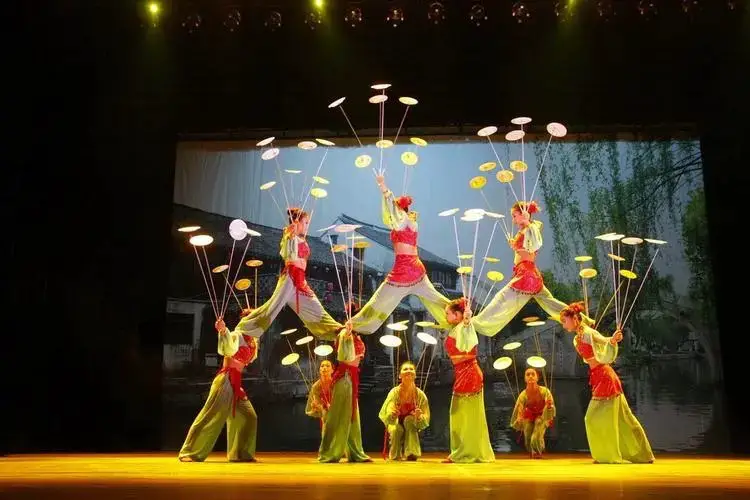Chinese acrobatics, also known as “the art of tricks,” is a popular form of entertainment that has been a part of Chinese culture for over two thousand years. It is an ancient art that combines acrobatics, gymnastics, dance, and martial arts to create a visually stunning spectacle. This article will explore the history of Chinese acrobatics, its various types, the inventors, and when it is appropriate to use it.
History of Chinese Acrobatics

During the Warring States Period, acrobatics was used as a form of military training, with soldiers performing stunts and tricks to improve their physical agility and combat readiness. It was also used as a form of entertainment, with acrobats performing at festivals, celebrations, and in the royal courts.
Over time, Chinese acrobatics evolved into a highly respected art form, with performers training for years to perfect their skills and techniques. During the Tang Dynasty (618-907 AD), Chinese acrobatics reached its zenith, with performers traveling throughout China and even performing for foreign dignitaries.
As acrobatics became more popular, it began to attract the attention of the nobility and the imperial court. Emperors and aristocrats began to patronize acrobats and organized competitions and performances.
During the Tang Dynasty, from the 7th to the 10th century, Chinese acrobatics reached its peak. Acrobatic performances were held in the imperial palace and on the streets. Acrobatic troupes would travel from city to city, performing for the masses and spreading their art.
The Song Dynasty, which followed the Tang, saw a decline in the popularity of acrobatics. However, during the Ming and Qing Dynasties, acrobatics made a comeback. New techniques were developed, and acrobatic troupes performed for the imperial court once again.
In modern times, Chinese acrobatics has continued to evolve and flourish. The techniques and skills of Chinese acrobats have become more advanced, and acrobatic performances have become more elaborate and breathtaking.
Throughout the centuries, Chinese acrobatics has continued to evolve and adapt to the changing times. Today, it is still a popular form of entertainment, with performances ranging from traditional lion dances and plate spinning to modern feats of strength and agility.
One of the most impressive aspects of Chinese acrobatics is the incredible skill and athleticism of the performers. Acrobats must train for years to develop the strength, flexibility, and coordination necessary to perform their stunts and tricks. They often begin training at a young age, with some acrobatic schools accepting students as young as five years old.
In addition to physical training, acrobats also receive extensive instruction in dance, music, and martial arts. These skills are essential for creating the beautiful, synchronized performances that are the hallmark of Chinese acrobatics.
Chinese acrobatics has also played an important role in preserving Chinese culture and tradition. Many of the stunts and tricks performed by acrobats are based on traditional Chinese stories and legends, and the performances often incorporate elements of Chinese music, dance, and costume.
In recent years, Chinese acrobatics has gained international recognition, with performers traveling around the world to showcase their skills and talents. It is a testament to the enduring popularity and beauty of this ancient art form, which has captivated audiences for thousands of years.
Types of Chinese Acrobatics
Chinese acrobatics encompasses a wide range of disciplines and styles. Some of the most popular forms of Chinese acrobatics include:
Diabolo: A performance that involves the manipulation of a two-headed, hourglass-shaped object called a diabolo.
Plate Spinning: A performance where a performer balances spinning plates on sticks.
Lion Dance: A traditional performance where performers dress up in lion costumes and dance to the beat of the drums.
Chinese Pole: A performance where performers climb, slide, and spin around a pole.
Contortion: A performance where performers showcase their flexibility and agility by contorting their bodies into unusual shapes and positions.
Who Invented Chinese Acrobatics?
It is unclear who exactly invented Chinese acrobatics. However, many historians believe that it was developed by farmers and fishermen as a way to pass the time during the off-season. Over time, it evolved into a highly respected art form that was performed in the royal courts and later traveled throughout China, entertaining people of all ages.
When to Use Chinese Acrobatics
Chinese acrobatics can be used in a variety of settings and situations. It is commonly used as a form of entertainment for audiences of all ages, and it can also be used as a performance art for special events such as weddings, corporate events, and festivals. Additionally, it can be used as a way to showcase Chinese culture and history to people from around the world.
Conclusion
Chinese acrobatics is a fascinating art form with a rich history that has captivated audiences for over two thousand years. It encompasses a wide range of disciplines and styles and can be used in a variety of settings and situations. Whether you are looking to be entertained or to showcase Chinese culture and history, Chinese acrobatics is an excellent choice.
